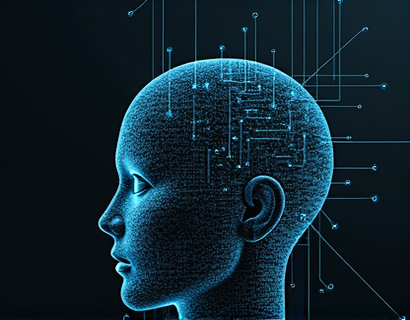AI-Powered Cosmic Learning: Interactive Exploration with Customizable Settings for Educators and Space Enthusiasts
In the realm of education and space exploration, the integration of artificial intelligence (AI) has opened new avenues for interactive and personalized learning experiences. This article delves into the concept of an AI-powered learning tool designed to make space and astronomy accessible, engaging, and customizable for both educators and space enthusiasts. By leveraging advanced AI technologies, this tool offers a unique platform for exploring the vast and intricate universe, tailored to individual interests and learning styles.
The core functionality of this AI-powered learning tool revolves around interactive explorations of celestial phenomena and astronomical concepts. Users can embark on a personalized cosmic journey, guided by an intelligent system that adapts to their knowledge level, preferences, and learning pace. This adaptive learning environment ensures that whether a user is a beginner or an advanced space enthusiast, they receive content that is both challenging and informative.
Customizable Learning Settings
One of the standout features of this AI-powered tool is its customizable settings. Users can adjust various parameters to tailor their learning experience. These settings include the depth of information, the type of content, and the pace of the exploration. For instance, a user can choose to focus on specific areas of astronomy, such as planetary science, astrophysics, or space exploration history. This flexibility allows educators to create lesson plans that align with their curriculum, while space enthusiasts can dive into topics that spark their curiosity.
Moreover, the tool offers different modes of interaction, such as text-based explanations, interactive simulations, and visual aids like 3D models and animations. These diverse formats cater to different learning preferences, ensuring that users can engage with the material in the way that suits them best. For educators, this means they can assign activities that cater to the diverse needs of their students, promoting inclusivity and effective learning.
Interactive Explorations
Interactive explorations are at the heart of this AI-powered learning tool. Users can embark on virtual journeys through the solar system, explore distant galaxies, and even simulate space missions. These interactive experiences are not just visually stunning but also scientifically accurate, providing a realistic and immersive learning environment. The AI system dynamically adjusts the complexity of the content based on the user's interactions, ensuring that the learning curve is always appropriate.
For example, a user can start with a basic tour of the planets in our solar system and gradually move on to more complex topics like dark matter and black holes. The AI can present these advanced concepts through step-by-step explanations, interactive quizzes, and real-time feedback. This gradual progression helps build a solid foundation of knowledge, making complex topics more accessible.
Personalized Learning Paths
The AI-powered tool creates personalized learning paths for each user, based on their initial inputs and ongoing interactions. This personalization is achieved through a combination of user profiles, learning history, and real-time performance analysis. The system remembers previous topics covered, the user's performance in quizzes, and their expressed interests, using this data to curate a tailored learning experience.
For educators, this feature is particularly valuable as it allows them to track the progress of their students and identify areas where additional support may be needed. The AI can suggest supplementary materials or alternative explanations to reinforce understanding. This data-driven approach ensures that no student is left behind, and each learner can advance at their own pace.
Educational Resources and Content Library
The tool comes equipped with a comprehensive library of educational resources, including articles, videos, podcasts, and interactive modules. These resources are curated by experts in the field of astronomy and space science, ensuring accuracy and relevance. The AI system can recommend content based on the user's interests and learning goals, creating a rich and varied learning experience.
For educators, the content library serves as a valuable resource for lesson planning. They can easily integrate these materials into their curriculum, providing a mix of theoretical knowledge and practical applications. The AI can also assist in creating custom quizzes and assessments, helping educators evaluate student understanding and retention of the material.
Real-Time Updates and Current Events
Space is a dynamic field, with new discoveries and events occurring regularly. The AI-powered learning tool stays updated with the latest news and developments in space exploration and astronomy. Users can receive notifications about recent discoveries, upcoming space missions, and significant astronomical events. This feature keeps the learning experience current and relevant, fostering a sense of excitement and relevance.
For space enthusiasts, following real-time updates can enhance their engagement with the subject matter. Educators can use these updates to spark discussions and inspire their students to explore current topics in depth. The AI can provide context and background information on these events, helping users understand their significance and impact on the field.
Collaborative Learning Features
Collaboration is a key aspect of effective learning, and the AI-powered tool supports this through various collaborative features. Users can join learning groups, participate in discussions, and collaborate on projects with peers or other users. The AI facilitates these interactions by providing discussion prompts, moderating conversations, and offering collaborative tools such as shared notes and project boards.
For educators, these features enable them to foster a community of learners, encouraging peer-to-peer learning and collaboration. Students can work together on assignments, share insights, and learn from each other's perspectives. The AI ensures that these collaborative efforts are productive and aligned with the learning objectives.
Accessibility and Inclusivity
Accessibility and inclusivity are fundamental principles in the design of this AI-powered learning tool. The platform is designed to be user-friendly and accessible to individuals with varying levels of technical proficiency and physical abilities. Features such as text-to-speech, adjustable text sizes, and high-contrast modes ensure that the tool is usable by a wide range of users.
Moreover, the content is presented in multiple languages, making the tool accessible to a global audience. This inclusivity ensures that learners from diverse backgrounds can benefit from the resource, promoting a more inclusive approach to space education.
AI-Driven Feedback and Assessment
One of the most powerful aspects of the AI-powered learning tool is its ability to provide real-time feedback and assessments. The AI analyzes user interactions, quiz results, and project submissions to offer constructive feedback and insights. This immediate feedback helps users identify their strengths and areas for improvement, facilitating continuous learning and growth.
For educators, the AI-generated reports provide a comprehensive overview of student performance, helping them tailor their teaching strategies and provide targeted support. The tool can also suggest additional resources or activities to help students overcome specific challenges, ensuring that each learner receives the support they need to succeed.
Conclusion
In conclusion, the AI-powered learning tool represents a significant advancement in the field of space education and astronomy. By offering interactive explorations, customizable settings, personalized learning paths, and a rich library of educational resources, it provides an engaging and effective learning experience for educators and space enthusiasts alike. The tool's commitment to accessibility, inclusivity, and real-time feedback ensures that users of all backgrounds can benefit from its offerings. As the field of space exploration continues to evolve, such innovative educational tools will play a crucial role in inspiring the next generation of scientists, explorers, and thinkers.










































